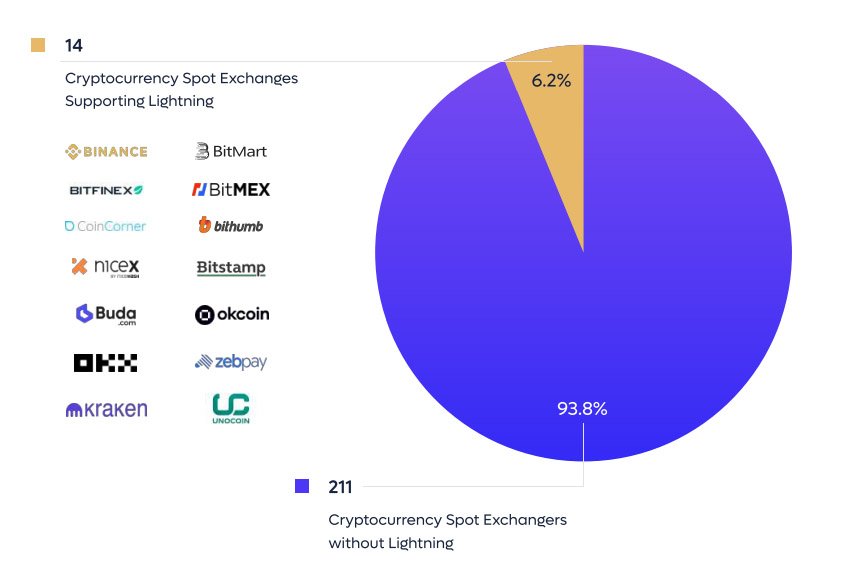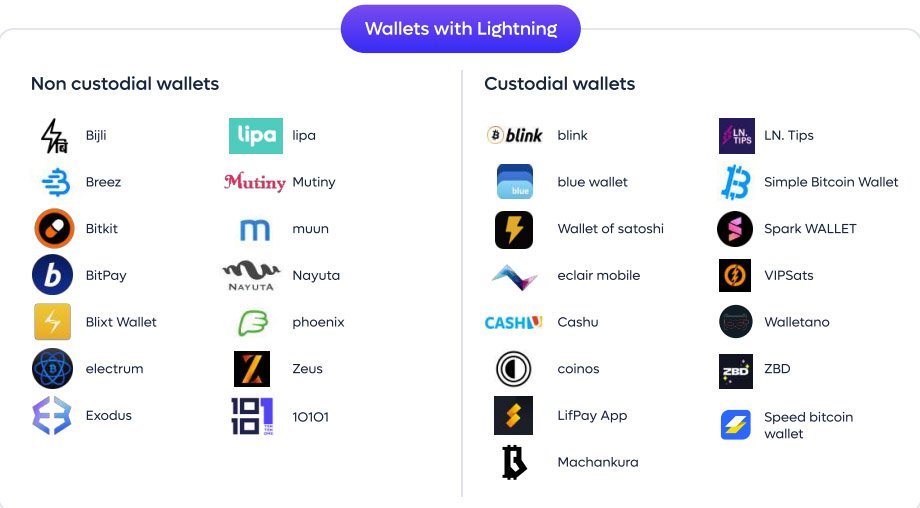The Bitcoin Lightning Network has emerged as a promising solution to enhance the scalability and efficiency of Bitcoin transactions. Bitcoin infrastructure company Kaminari recently published a report that sheds light on the current state of the Lightning Network’s adoption, highlighting both its potential for broader acceptance and the challenges it faces in the digital asset industry.
According to the report, more than 328 million users now utilize the Bitcoin Lightning Network for payments. This notable expansion is primarily attributed to the integration of the Lightning Network by key players in the digital asset industry.

Bitcoin Lightning Network: Slow Adoption by Exchanges
Binance, with its 150 million user base, played a pivotal role in this surge by enabling its users to engage in instant and cost-efficient BTC transactions through the Lightning Network.
Additionally, other prominent exchanges such as OKX, Kraken, Bitstamp, and Unocoin, along with financial services platforms like CashApp and Exodus, collectively contributed to reaching such a vast user base with Lightning Network accessibility.

Despite the technological advancements and the surge in interest in decentralized finance, the Lightning Network’s integration into exchanges remains relatively limited. According to the report, out of the 224 active centralized digital asset exchanges, only 14 have embraced the Lightning Network, raising concerns about scalability and user-friendliness, especially for retail users.
“Exchanges serve as the backbone of the crypto ecosystem, with platforms like Binance, OKX, and Bitstamp boasting millions of users. However, a mere 6% of crypto exchanges currently utilize the Lightning Network for Bitcoin transactions,” noted analysts at Kaminari.
Further Developments
The slow adoption rate is attributed to the technical complexities associated with the Lightning Network. However, Kaminari anticipates further developments this year, with Coinbase, boasting a user base of 108 million, expected to join the Lightning Network.

It is important to note that while having access to Lightning payments does not guarantee universal adoption, the increased user base enhances the likelihood of broader acceptance.
Growing but Limited Wallet Integration
The report also delves into the integration of Lightning Network technology into digital asset wallets, shedding light on the relatively small but growing number of wallets that have incorporated this innovation.
Among the over 350 analyzed wallets, only 29, comprising 15 custodial and 14 non-custodial, have integrated Lightning. Notably, only Exodus and BitPay, among the top 10 most popular wallets, have embraced this technology. The report reads:
“Wallet integration represents a crucial avenue for expanding the Lightning Network’s user base. The findings underscore the substantial room for growth in wallet integration, presenting an opportunity to enhance user accessibility.”

Potential for Micro BTC Transactions and Stablecoin Integration
Despite the challenges, the Lightning Network demonstrates significant potential, particularly in facilitating micro BTC transactions with low fees. As the Bitcoin blockchain continues its robust growth, the Lightning Network’s expanding node count and capacity position it as a viable solution for the market’s future.
The report also notes the significance of the integration of stablecoins into the Bitcoin blockchain. The potential transfer of substantial amounts of USDT transactions from Tron and Ethereum to the Lightning Network has the potential to significantly alter the landscape of the stablecoin sector.
Kaminari’s analysts highlighted:
“If a fraction of Tether transactions migrates to the Lightning Network, it could result in an annual turnover ranging from $257 billion to $514 billion. The introduction of Tether to the Lightning Network could mark a transformative moment, reshaping the stablecoin market landscape.”
The Lightning Network’s growth trajectory promises vast opportunities for those who can harness its innovative capabilities. However, the current state of adoption indicates the need for improvements to make the network more accessible and user-friendly for a diverse range of participants.










